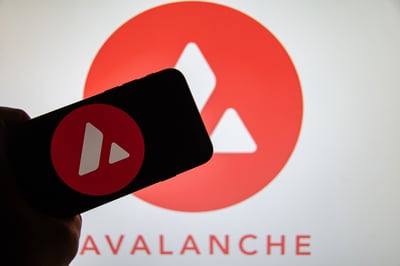The blockchain industry has long attempted to bring crypto payments into mainstream spheres of commerce. Payment terminals around the globe would bring cryptocurrency out of the digital world and give it a whole new realm of utility.
However, the earliest attempts to bridge into crypto payments didn’t catch. Although there was some initial hype, unfortunately, business practices, scam companies, and technology limitations prevented widespread adoption and frustrated the development process. As we moved into the Crypto Winter, many thought that crypto payments were a dream of the past.
Yet, recent data suggests that crypto payments are once again on the rise. Data published on Statista suggests that this market is growing at a compound annual rate of nearly 17%, potentially skyrocketing in value from 2022-2029.
But what exactly sets these cryptocurrency payments apart in 2024 from attempts in previous years? Is the hype once again misplaced, or has this industry turned a corner?
In this article, we’ll dive into the world of crypto payments, commenting on the core trends that define this industry, the innovative technologies that are reshaping the market, and companies like Blocktrade that are leading the way.
Exploring Previous Attempts at Crypto Payment Systems
The blockchain market has shifted dramatically over the past five years, hitting major peaks and moving through slow periods of decline. The changing interest in integrating cryptocurrency payment systems has moved fairly in line with these fluctuations.
Initial crypto payment terminals were launched, with progress happening to such an extent that El Salvador even accepts Bitcoin as a legal tender. Across the United States, there are also locations where users can pay using Bitcoin. These payment terminals are known as MSBs.
However, despite what seemed like a phenomenal start, the blockchain industry moved through a difficult period that stunted progress. After several major scams, company implosions, and rug pulls, the high levels of confidence in the industry were suddenly shattered.
With reduced levels of trust, the total market value of many leading cryptocurrencies fell. From there, the idea of creating accessible payment systems around the globe began to become less feasible, especially as few centralized financial institutions were championing the world of decentralized currencies.
However, the past few months have seen a sudden spike in interest in cryptocurrency payments.
What’s Different This Time Around?
One of the most fundamental changes that the cryptocurrency world has experienced over the last few years is a radical expansion of its underlying economy. Years ago, when fewer people actively engaged in blockchain systems, the economy was a fraction of the size it currently is.
As the crypto economy continues to expand, people around the globe have started to get involved in blockchain and its various deployments. In fact, the Global Crypto Adoption Index suggests a huge influx of crypto payments and usage, especially in leading countries like India, Nigeria, Vietnam, and the United States.
Alongside bringing new minds to the blockchain field that help to accelerate development, a higher awareness of cryptocurrency also leads to more money flooding into this market. With a more stable flow of finances into crypto, firms are able to invest in blockchain architecture with more confidence, paving the way for adoption and innovation.
This new confidence in blockchain has made room for new technological advances, helping to drastically improve the potential for streamlined crypto payment systems.
How Are Blockchain Companies Linking to the Commerce World?
Blocktrade is a striking example of how blockchain infrastructure is bridging the gap between traditional spheres of commerce. Blocktrade is a fully EU-regulated platform for digital assets and commerce, providing state-of-the-art services for the buying, selling, and trading of cryptocurrency.
By creating and dispersing a new POS machine, Blocktrade has been able to integrate cryptocurrency payments into 100,000 shops around the world. Using this new POS machine, users can pay for their day-to-day items with cryptocurrency in less than 10 seconds. The speed, utility, and worldwide functionality of this tool demonstrate the extent to which the world of blockchain has changed.
Years ago, blockchain companies had big ideas but lacked the ability to bring their strategies to life. Fast forward and we have integral parts of the blockchain ecosystem like Blocktrade actively bringing their designs to life. The innovation this company – and many others in the wider Web 3 ecosystem – demonstrates perfectly exemplifies what’s different about crypto payments this time around.
Final Thoughts
As media attention covering crypto payments once again starts to flood in, the industry is self-examining to see what sets 2024 apart from previous years. Yet, this time around, the world of blockchain has the resources, technology, and historical perspective necessary to convert this traction into a stable and scalable crypto payments system.
Over the next few months, we’re likely to see companies like Blocktrade launch even more supportive features, devices, and technologies that allow crypto payments to break into the mainstream. With the blockchain world rising once again, this year should be exciting for everyone involved in the industry.
 Nikolas Sargeant
Nikolas Sargeant





